Many of you have seen the full life cycles of your favorite weeds year after year, and once that happens, you’d know them anywhere. Hopefully we’re helping you to add new favorites to your collection with phone-cams of weedom, or perhaps giving you more reasons to love them. The big plus of weedom over some of the excellent foraging and herb books out there is our bigger photos showing distinguishing features of the plants, alongside the vital reasons why you’d want to make friends with them.
We hope for all to gain confidence and familiarity with the weeds so that you can utilize them for good, and help them to complete their mission of propagation, thereby confounding the HOAs and governmental bodies which seek to impose their own order upon the natural landscape :-D
To this end, we bring you a post eclipse-ocolypse, special compendium of baby weeds to enjoy, add to your greens and salads, dig the roots, make capers out of the buds, use for medicine, or watch through their life cycle. New readers, or those wanting a review can click the links and read our archived articles. Some babies are yet to be featured, for example the up and coming yellow dock (Rumex crispus).
Without further fanfare:
We think of chicory as a cross between a dandelion and a wild lettuce. So here are all 3 side by side. If you munch on them you’ll taste a gradient from green- edible dandelion thru too-nasty-for-salad, wild lettuce. Why should you know about wild lettuce (Lactuca sororia)? It’s an option for pain relief with a more opiate like action than most other weeds, and we expect to cover it in the future.
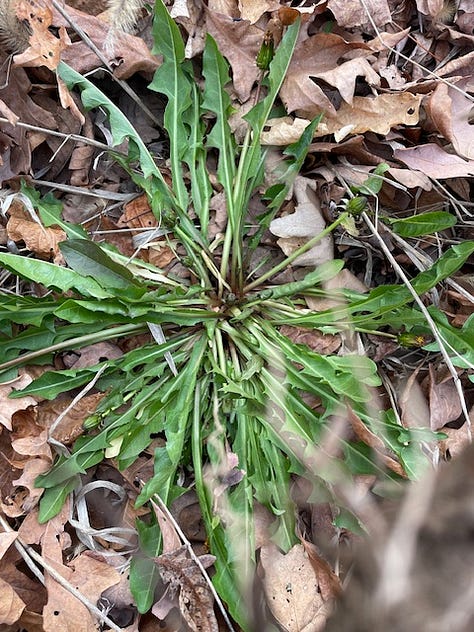
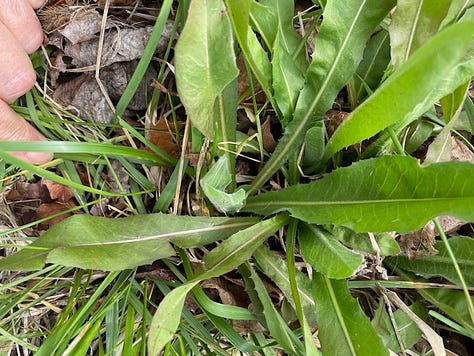
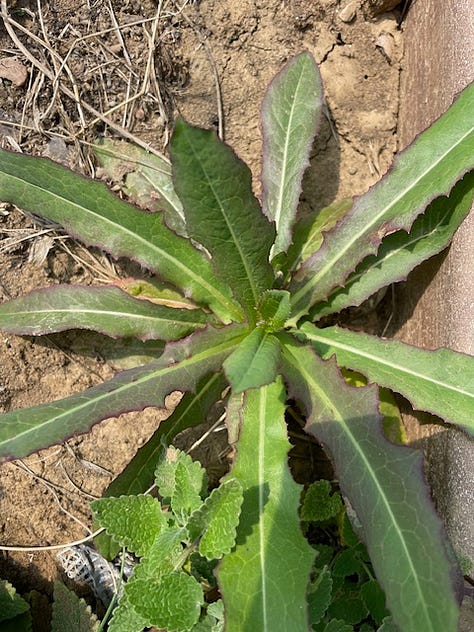
Dandelion has those backwards pointing lobes on the leaves, and older chicory leaves can develop similar lobes, but the underside midvein of dandelion is smooth, and that of chicory has hairs, while the midvein of wild lettuce has actual spikes, which are fine when they’re young and more substantial as they age. Dandelion never forms a true actual flowering stem. but both chicory and wild lettuce do. Check out Chicory and Dandelion in our archives.
Next up are the plantains which could be salad additives right now, and which become excellent medicine later in the year. Here are the young versions of narrow leaf plantain and broad leaf plantain side by side.
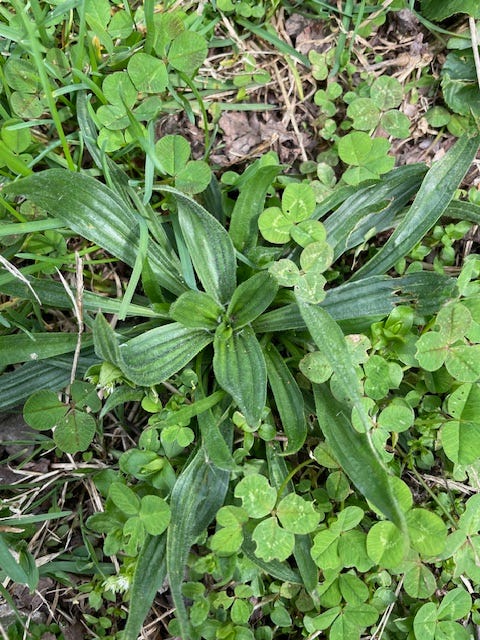

We use these two interchangably for medicine. Our local broadleaf species is Plantago rugelii. Many readers are more familiar with the very similar Plantago major. Try rubbing this plant on a bug bite, or poulticing a sting with it. You’ll be surprised at the results, and may see fit to replace the various topical remedies from the pharmacy. Check our link for more about the plantains .
It’s really good to distinguish these 3 fairly unrelated weeds with finely segmented leaves, since the last (#3) is an extreme Do-Not-Eat.
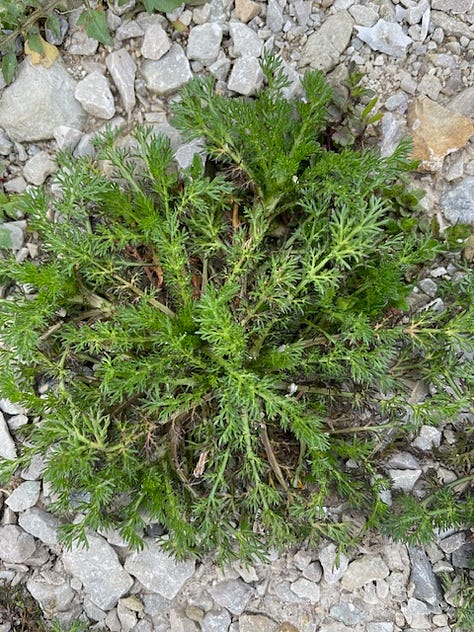
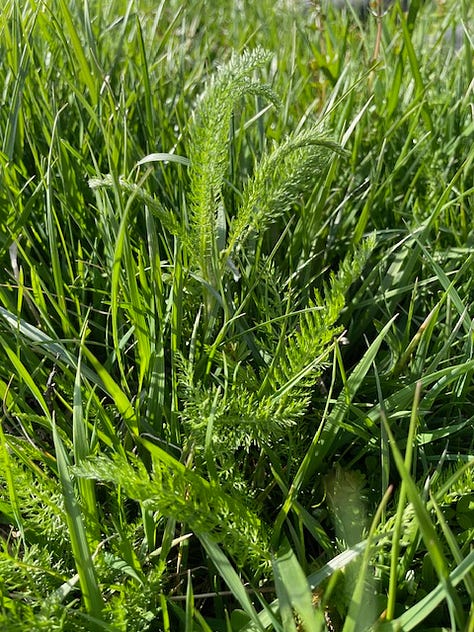
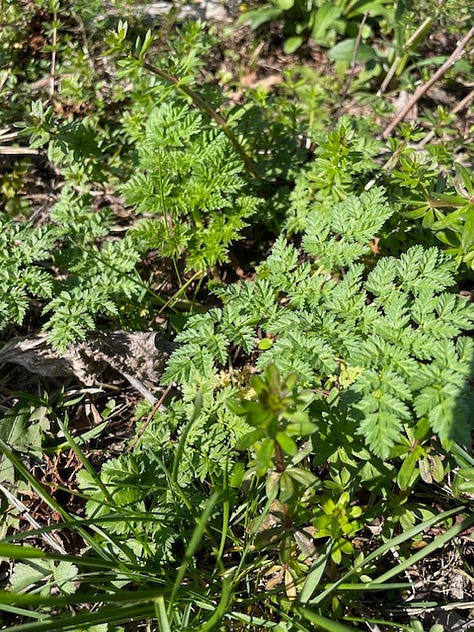
To the left is pineapple weed, a relative of chamomile. The leaves of these 2 herbs look similar, but the bloom of pineapple weed looks like the center portion of the chamomile bloom with no petals. The common name comes from the scent and taste of this weed which has significant culinary applications. It tolerages horrible growing conditions, such as gravel driveways and cracks in the sidewalk. The center weed with finely fernlike leaves, hiding in the pasture, is the classic wild Yarrow, a herb of considerable classic reputation and importance for wound healing and numerous other applications. To the left is baby poison hemlock lacking the tall and distinguished, purply smooth stem and white umbelliferous blooms that form later in life. None-at-all is what you want from this plant. It has some medicinal potential, but is of such hazard that most herbalists would not risk distinguishing between the useful and fatal dose. Weedom’s archives covers yarrow and poison hemlock, and we have future plans for pineapple weed.
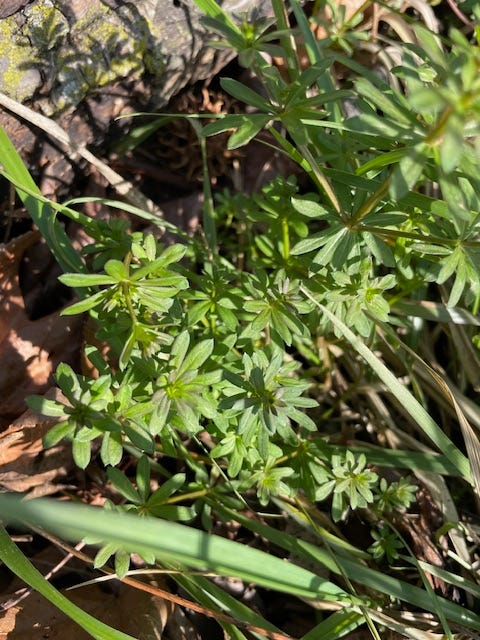
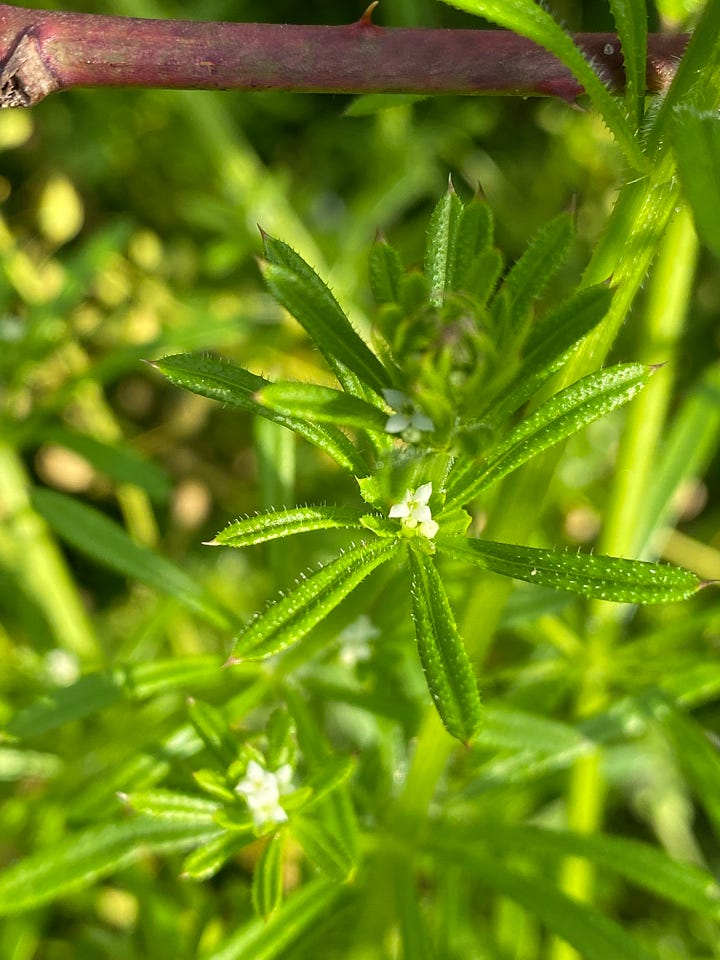
We haven’t used the invasive Galium mollugo, (false baby’s breath) above right, though it is said to have some utility as an edible weed, a depurative, and was traditionally used to treat hysteria and epilepsy. The clingy Galium aparine (cleavers) on the left has plenty of uses to assist with such things as diuresis and lymphatic movement, and there’s even a bit of caffeine in the seeds. There’s another plant, Galium odoratum, sweet woodruff which provides ground cover in landscapes throughout Europe and the U.S.
Coming soon…
This relative of buckwheat ends its growth cycle with a durable spike of rust red seeds which will show you where to look for these spring rosettes. Yellow dock offers a fair amount of oxalic acid along with nutrients in the leaves, which limits the amount that should be eaten, but the distinctive yellow roots have long been put to medicinal use as digestive bitters, as a liver tonic, prebiotic, to address both diarrhea and constipation, and for nutritional supplementation.
We had near total eclipse at weedom with all the associated traffic, but we didn’t bother to burn our eyes on it. Instead we observed how the cattle reacted to the weird lighting with a sort of 360 degree sunset effect. They seemed totally unperturbed. Smarter than us, they are.


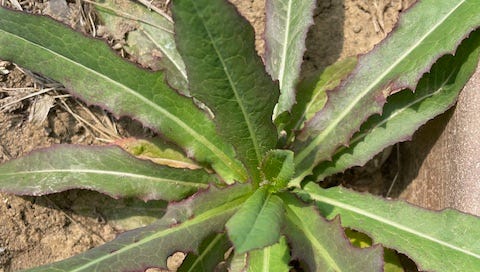




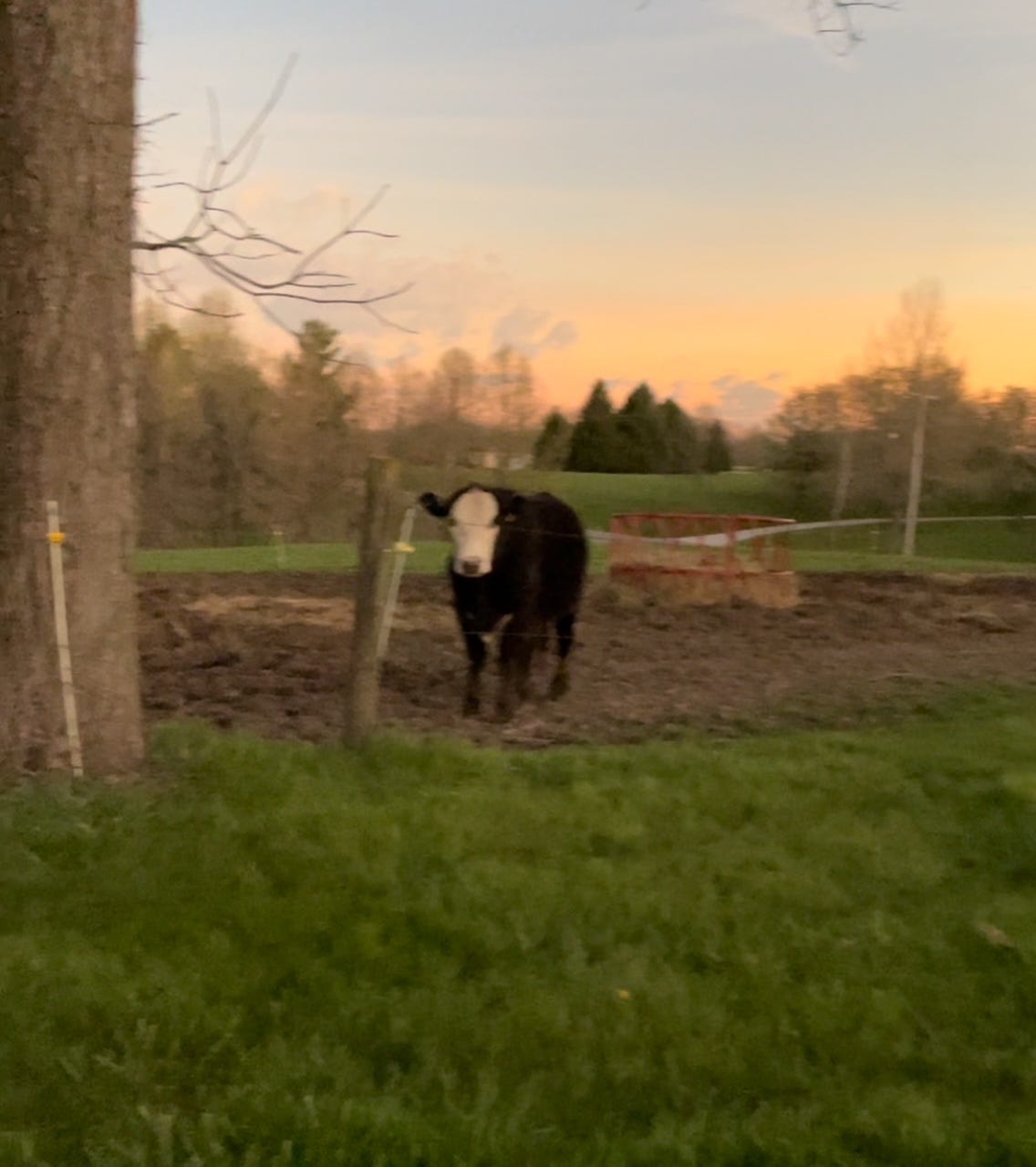


Loved it! Thanks KB!
Thank you!